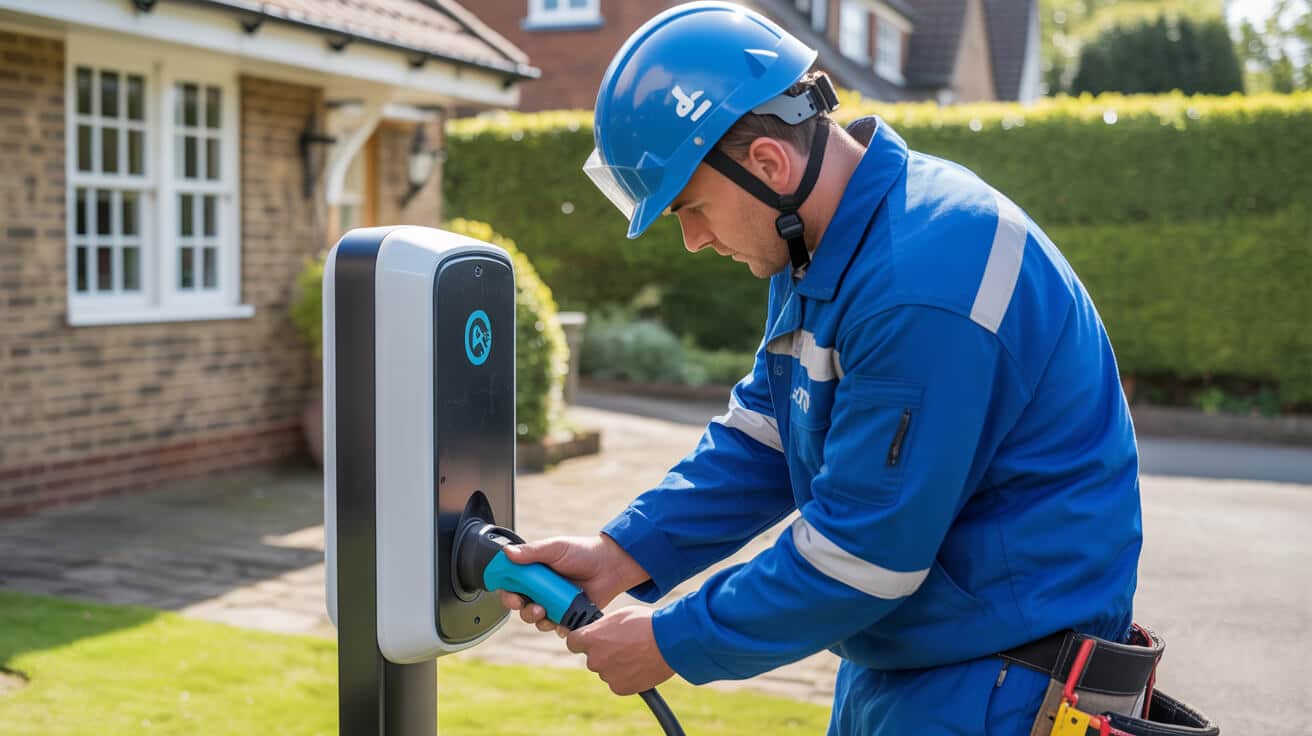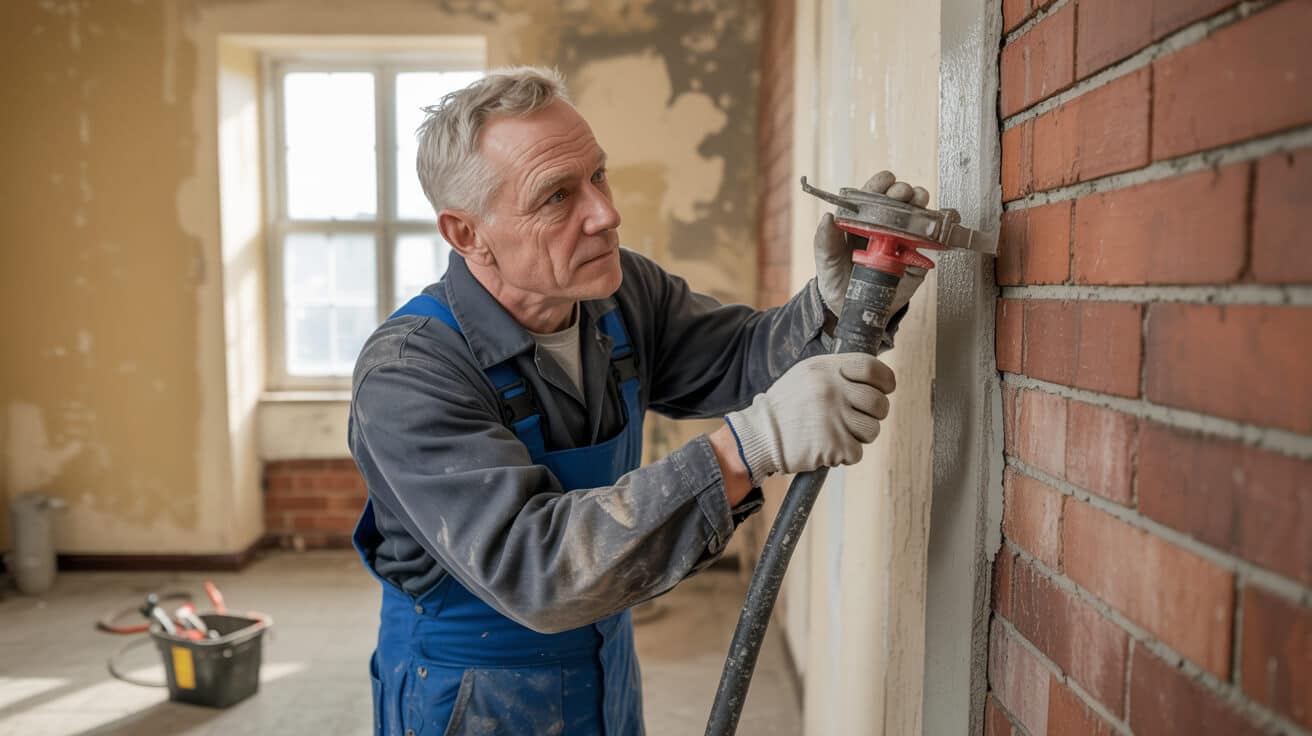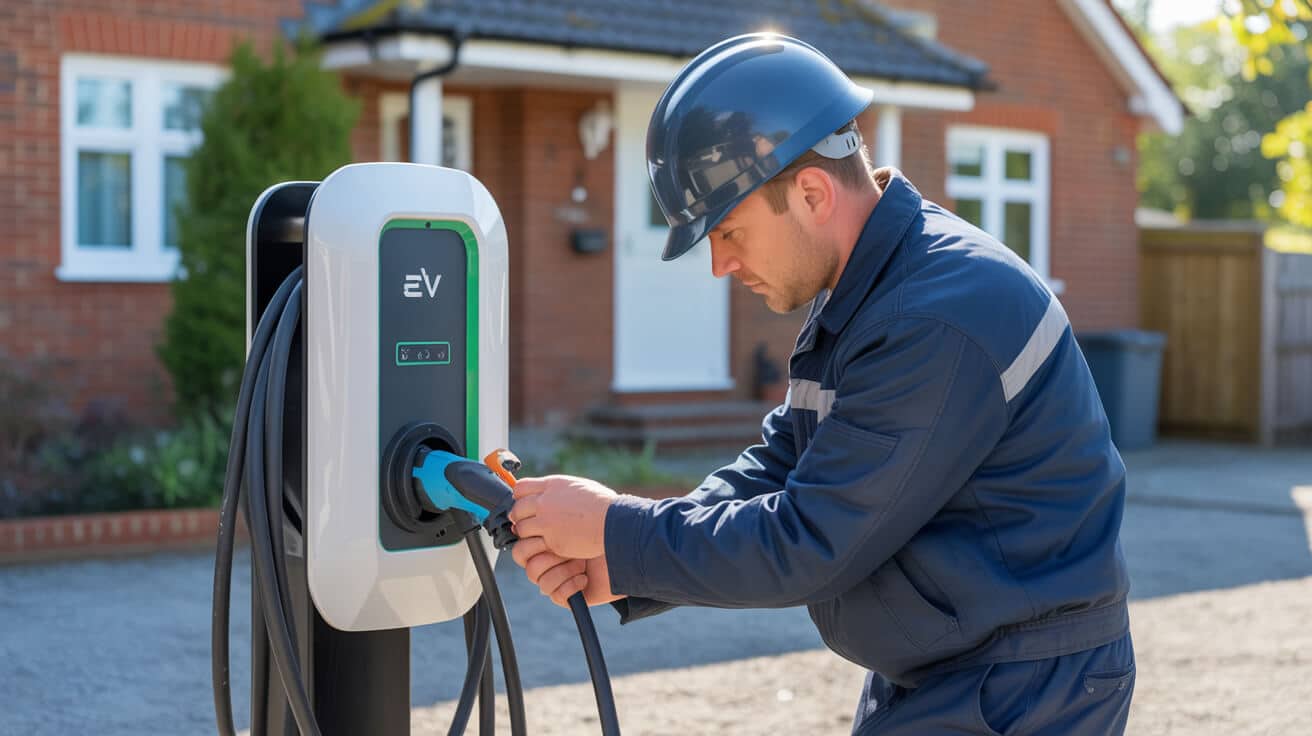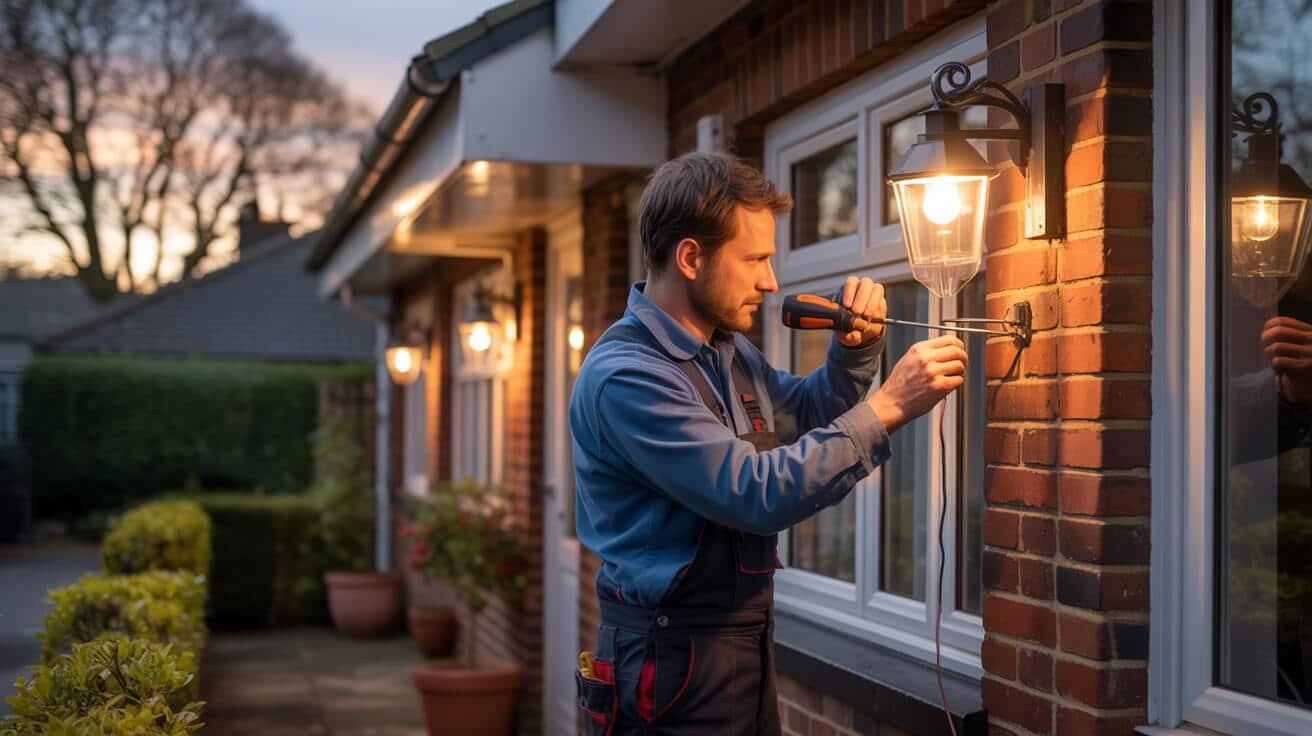 Navigating Electrical Safety (Part P) During Kitchen And Bathroom Renovations
Navigating Electrical Safety (Part P) During Kitchen And Bathroom Renovations

Why Is Part P Compliance the Deciding Factor in Safe Kitchen and Bathroom Renovations?
Renovating kitchens and bathrooms isn’t just about sleek tiles, new cabinets, or upping property value—it’s about safeguarding lives and investments. Whether you own, let, or manage property, Part P compliance is the line between peace of mind and liability. In England and Wales, this regulation governs every socket, switch, and circuit where water and electrics get dangerously close. It’s not bureaucracy—it’s a legal barrier against electrical hazards, insurance refusals, and failed sales.
Compliance isn’t just about ticking boxes—it’s your shield when things go wrong.
Any property owner or landlord ignoring Part P is running blind towards risks they can’t see until it’s too late. Sales collapse, tenants get nervous, and even your insurer may walk away if you can’t produce clear paperwork showing certified work.
A surprising number of professionals only realise how much Part P matters when blame is on the line—typically after a fire, accident, or failed building survey. Fixing compliance after the fact costs double: lost trust, remedial bills, and even forced rip-out of recent work.
Electrical compliance is a proactive asset, not a painful chore. Owning it from day one means documentation isn’t a scramble when opportunity or crisis comes knocking—you’re simply ready for the next step, not stuck retracing old mistakes.
What Electrical Work in Kitchens and Bathrooms Falls Under Part P—and Who Bears the Risk?

It’s easy to assume electrical regulation only applies to major works: full rewires, new builds, or extensive renovations. In reality, almost any addition or change in a “wet room” is caught under Part P. This covers homes, blocks of flats, HMOs, rental properties, and even outbuildings fed by the main supply.
Whoever arranges or approves work—property owners, landlords, managers—takes on legal responsibility for how it’s installed.
Consider these situations, each clearly regulated:
- Adding or changing kitchen or bathroom circuits—not just complete rewires.
- Moving or replacing consumer units (your fuseboard).
- Installing fixed appliances: cooker points, shower feeds, bathroom fans wired to lighting rings.
- New electrical runs to garages, sheds, utility rooms, or outdoor kitchens.
Exemptions exist for like-for-like swaps outside dangerous zones—but they’re narrow. A socket faceplate in a living room? Often fine for a competent DIYer. A new lighting point in a kitchen? Notification required.
Responsibility is crystal-clear: If you ask for the work, you must document it. For landlords, agents, and HMO managers, missing certificates are red flags for auditors and tenants. For all other owners, lack of documentation can freeze a sale, block insurance claims, or trigger enforcement from Building Control.
All Services 4U takes the grey areas out of compliance—scoping, notifying, and documenting what the law requires. There’s no “I thought that was minor” loophole after the fact—if in doubt, treat it as notifiable and get it done right, first time.
How Do You Determine if Your Kitchen or Bathroom Project Requires Notification?

Knowing the boundary between notifiable and non-notifiable electrical work makes the difference between a smooth upgrade and a future legal headache. Notifiable work demands formal approval or self-certification by a registered professional. The basics:
Always Notifiable:
- Installing new circuits anywhere, especially in kitchens, bathrooms, or outbuildings.
- Upgrading or moving consumer units.
- Rewiring, even partially, within a kitchen or bathroom.
- Running power to new buildings—sheds, garden offices, utility rooms.
May Not Require Notification:
- Direct like-for-like replacements, such as swapping a damaged socket for the same type *outside* high-risk zones.
- Changing appliance outlets where no cable alteration is involved (yet even here, errors are easy and costly).
Better safe than sorry isn’t just a saying—it’s the logic behind the regulation.
If your project touches water-prone zones, assume it needs notification. Document everything. Even “simple” upgrades—say, replacing a bathroom light if it was previously wired incorrectly—can become regulatory landmines if not checked before work starts.
Take guesswork out of the equation: consulting a Part P-registered electrician up front places the responsibility on a trusted expert. All Services 4U offers crystal-clear scoping, free compliance advice, and takes the burden of notification off your plate. The cost of oversight now pays for trouble-free sales, rentals, and claims for years to come.
What Dangers in Kitchen and Bathroom Electrics Make the Rules so Strict?

It’s no accident that kitchens and bathrooms sit at the epicentre of electrical safety rules. Water is not just a nuisance to circuits—it’s a fast lane for fatal hazards. The stats tell the true storey: over 4,000 UK house fires every year start with faulty or unregulated electrical work—most commonly in kitchens and bathrooms (Electrical Safety First, 2024).
The most dangerous time isn’t during the works—it’s months or years later, when a shortcut finally sparks disaster.
Common silent killers:
- Uncertified wiring run near water.
- Appliances without correct IP rating, RCD protection, or correct earthing.
- “DIY” jobs—innocent enough, until a damp spell or surge finds a hidden weak point.
- Poor documentation—meaning even good work can’t be verified, and thus is treated as unsafe in a claim or survey.
For landlords and agents, these oversights are deal-breakers for insurance and letting licences. For private owners, they can void insurance when you need it most. Remedial costs come not only in physical fixes but also in shattered confidence, lost tenants, or a house struggled to sell.
All Services 4U is relentless about safety—auditing zone by zone, always installing modern RCDs, and documenting everything down to the last test for a seamless handover. Shortcuts are false savings; clear compliance is long-term value.
Which Electrical Safety and Compliance Checks Are Non-Negotiable During Kitchen Renovations?

Kitchens operate under a microscope, electrically speaking, because risks scale with just how many gadgets, wet works, and “user upgrades” happen here. Every change, whether socket, appliance, or lighting, must meet BS7671 and Part P.
- Allowable socket placement: No sockets within 300mm of a sink; at least 150mm away from a hob or oven. Miss this, and even great craftsmanship can be forced out by Building Control.
- RCDs save lives: Each circuit demands up-to-date RCD protection; old residual current devices may not meet new trip speed standards.
- Dedicated circuits for big appliances: Don’t chain ovens or hobs to overloaded spurs. Give each heavy user its own protected supply.
- Total load calculation: Future-shield your upgrades—modern kitchens fill up with new appliances faster than you expect.
Fix a non-compliant issue during or after works, and you’re paying for the same job twice—plus hours of paperwork and risk.
Professional electricians don’t cut corners—they document every instal, mark every socket, and provide ironclad certification. This documentation is the “passport” your property needs for insurance, lending, and sale.
All Services 4U makes these checks non-optional—every project is pre-planned to standard, with site records and test results ready for any inspector, buyer, or tenant. No fudge factors, no guessing games—only fully proven compliance.
How Do Bathroom Zones and IP Ratings Shape What Can (and Can’t) Be Installed?

Bathrooms are regulated with such strictness because risk mapping is done by “zone”: how close is the device or circuit to reliable water contact? Here’s the essential rundown:
- Zone 0: Direct inside baths and showers. Only 12V max, full IPX7 protection—meaning “safe to dunk” is required.
- Zone 1: Up to 2.25m above showers or baths. Fittings: IPX4 rating minimum, with RCD protection always in place.
- Zone 2: 60cm stretch outside Zone 1, still risky but with less intense threat—yet IPX4 remains the bar.
Most compliance failures come down to fitting the wrong hardware for the wrong zone—inspector doesn’t bend here.
13A general sockets? Never permitted. Only shaver points, at stated distances, with integrated transformer. Even minor lighting tweaks can trip notification if done by non-registered hands or the wrong item appears in the wrong zone.
All Services 4U applies a laser focus from day one: every bathroom job is mapped by zone, IP rating is double-verified, and documentation is locked in. Each wiring plan is reviewed, meaning there are never any “grey zones” for future disputes, failed sales, or tricky insurers to weaponise against you.
How to Guarantee Every Electrical Upgrade Is 100% Legal and Built to Last

Getting “full marks” for compliance isn’t wishful thinking—it’s protocol with the right workflow:
- Engage certified Part P professionals: Only contractors registered with NICEIC, ELECSA, or NAPIT can sign off works, bypassing bureaucratic headaches.
- Notify before you start: For self-managed works, local Building Control must inspect from day one—not retrospectively.
- Audit the paper trail: Keep your EICs, council notifications, and any test sheets safely filed—digital is fine, but accessible is key.
- Close the loop: Don’t take “it looks good” for an answer. Demand accurate, properly filled certificates; most refusals at sale or insurance time are due to a missing or incomplete doc.
Nothing stops a deal colder than a surveyor asking for a Part P sign-off—not finding it, and then building control refusing to grandfather in uncertified work.
All Services 4U champions a “compliance pack” mentality—every project is closed out only when you hold full, digitally recorded certificates that let you sell, let, refurb, or insure at a moment’s notice. The ultimate result? Less stress now, and total immunity from nasty surprises down the road.
What Penalties and Pitfalls Await If You Ignore Electrical Compliance?

Most compliance headaches are silent at first—until someone checks, or worse, something fails. Here’s what current law (and practice) puts at risk:
- Fines and prosecution: Over £5,000 per breach, with possible criminal records, if you bypass notification or certificate rules in kitchens or bathrooms *(cpdonline.co.uk)*.
- Enforced rip-outs: Local authorities can order you to undo work—at your expense—or block a planned sale, let, or mortgage move.
- Insurance shutdown: No valid paperwork? Insurers can (and do) decline to pay out on claims, even for unrelated issues if the installation’s safety is in doubt.
- Sale collapses: Surveyors now flag missing Part P, and buyers use this as leverage—or walk away entirely, driving down value and triggering delays.
- Loss of trust/permission to let: Letting agents, tenants and council auditors want a paper trail; if it’s not there, letting licences can vaporise—along with income and credibility.
The cheap shortcut is always the costliest route—correction, lost rent, and reputation take far longer to recover.
All Services 4U proactively neutralises these risks—every project comes with watertight certificates, transparent notification, and clear inspection logs. You’re always ready for audit, claim, or sale, rather than scrambling under stress.
Why Property Owners and Managers Trust All Services 4U for Electrical Upgrades
Electrical compliance is a minefield you shouldn’t cross alone. Property owners, landlords, and facilities managers turn to All Services 4U for simple reasons:
- Genuine expertise: Our teams carry minimum NVQ Level 3 and City & Guilds credentials, blending compliance mastery with day-to-day job site pragmatism.
- Zero-lost-paperwork process: Every notifiable job is pre-notified, signed off, and you’re given a digital pack—no last-minute hunts for certificates.
- Straightforward scoping and honesty: No guesswork, no surprise add-ons—just realistic, fixed-fee plans with visible regulatory steps.
- One-point contact: From emergency repairs to full refurbishments, one call covers every discipline—no chasing multiple contractors.
- Recognised, trusted record: Which? endorsement, TrustaTrader certification, and documented case histories for every legal-compliant project.
The easy route is one call to All Services 4U, which leaves you holding the only documents that matter.
Clients gain from a service that prioritises risk reduction, marketability, and audit-readiness—every project finished with digital evidence ready for an insurer, buyer, auditor or tenant to check, any time.
Partner With All Services 4U Today
Every kitchen or bathroom project, large or small, deserves an electrical partner who reduces risk, accelerates approval, and future-proofs your investment. From compliance audits and fast quotes to start-to-finish project management, All Services 4U removes confusion and adds certainty.
Book a compliance check, ask a question, or get a risk-free quote today. Move forward with your renovation knowing that your electrics—like your paperwork—are built to last. The right approach means never being caught out, and always being ready for the next opportunity.
The only regret owners and landlords ever have is not calling us sooner.
All Services 4U stands as your compliance-first, owner-protecting electrical partner—for every project, every time.
Frequently Asked Questions
What legal obligations do property owners really face on electrical safety when upgrading kitchens and bathrooms?
As the property owner or commissioning client, you’re ultimately responsible for the safety and compliance of all electrical work in kitchens and bathrooms—even if you use qualified tradespeople or a well-known firm. UK Building Regulations Part P make it clear: regardless of who holds the screwdriver, responsibility for correct paperwork, certification, and safe installation follows the person arranging or paying for the job. Hire direct, sub out, or let a friend “do you a favour”, the burden is yours.
If documentation is missing, defects are discovered, or someone gets injured, regulators and insurers will pursue you, not the tradesperson. For landlords, letting without valid certification can breach your licence and leave you facing financial penalties or even criminal charges. Professional services like All Services 4U address these risks by employing certified electricians, registering notifiable work, and providing you with an audit trail so everything stands up to legal, financial, and insurance scrutiny.
You can delegate the task, but you can’t delegate the legal risk—your signature is what stands between compliance and a costly rebuild.
Can legal liability ever transfer fully to the contractor?
Only if you appoint a single registered main contractor, notify Building Control in writing, and ensure all insurances specifically hand over liability. This is rare in most UK renovations, meaning you stay on the hook unless you’ve got ironclad paperwork.
What risk do inherited works present for new owners?
Buying a property doesn’t guarantee past compliance. If prior owners skipped notifications or ran wiring “under the radar,” you may face demands for immediate upgrades or lose out on insurance cover. Verifying all certificates at purchase is your best defence.
Which electrical tasks in kitchens and bathrooms need official sign-off or notification?
Any new circuit, major alteration, or consumer unit change around water—especially within bathrooms or kitchens—requires either Building Control notification or direct sign-off from a Part P-registered electrician. “Notifiable” work includes:
- Installing showers, ovens, or underfloor heating circuits.
- Moving or adding sockets near baths, showers, or sinks—especially within UK “zones” (Zone 0: inside bath/shower; Zone 1: 2.25m above; Zone 2: 60cm periphery).
- Swapping out fuse boards, or upgrades that impact the entire consumer unit.
- Extending the electrical supply to garden offices, annexes, or outbuildings served from the kitchen.
Routine tasks like bulb changes or faceplate swaps don’t trigger notification, so long as you follow the latest IET Wiring Regulations (BS 7671:2018). But don’t guess: if you’re unsure whether the work is minor or notifiable, always ask for written clarification or check the most recent amendments.
If you’re hesitating whether a job requires sign-off, the safe bet is to assume it does—the cost of being wrong far outweighs a quick call to a professional.
Are “low risk” tasks ever exempt from official paperwork?
The legal threshold is dictated by the zone and nature of the task, not just its complexity. Work near water or involving new circuits should always go through notification.
What’s the bottom line for skipping this step?
Ignoring notification exposes you to over £5,000 in fines, forced remedial work, and refusal of insurance—especially if it’s later linked to harm or property loss.
How do you ensure electrical work in high-risk areas meets legal standards and certification?
The proven route is hiring a Part P-registered electrician—a technician recognised by a UK government-approved certification body (NICEIC, NAPIT, or ELECSA). Only these pros can self-certify notifiable work, issuing both Building Regulations Compliance Certificates and Electrical Installation Certificates (EICs).
Before a single socket is fitted, ask your trades or property maintenance partner exactly which parts of the project are notifiable, who registers them, and how paperwork is provided. Pro outfits like All Services 4U streamline compliance: they manage the process, sequence certificates, and back up records digitally for audit or sale events.
Keep every certificate—digitally and on paper—tagged with job details. Periodically verify:
- Kitchen sockets are both RCD-protected and correctly distance-rated from sinks and cookers.
- Bathroom electrics (heating, ventilation, lights) are certified to IP44 or higher, in line with their moisture zone.
- The consumer unit includes advanced earth and surge protection.
- No “workarounds” exist—like trailing extension cords or makeshift fuse fixes.
In electrical compliance, the best projects have a paper trail longer than the wire runs—and a value boost to match.
What if you suspect corners were cut or can’t locate old paperwork?
Order an Electrical Installation Condition Report (EICR) from a certified contractor. For legacy works without records, you may need regularisation via Building Control—expect additional costs and possible major remedial works, but this restores compliance.
Can all documentation be managed for you?
Trusted partners like All Services 4U routinely catch up, certify, and log historical or multi-stage job records, so no future owner or auditor sees a gap.
What are the consequences of failing electrical compliance in kitchens and bathrooms?
Most people underestimate the lifespan and cost of failing to comply. If notifiable work skips certification, expect:
- Formal notices from Building Control demanding upgrades—at your own expense.
- Fines per breach (commonly exceeding £5,000) and, for persistent offenders, the risk of prosecution.
- Loss of tenancies or licences for landlords—leaving you open to claims from tenants or the local authority.
- Sale delays, price cuts, or even collapse of property deals if buyers spot missing certs.
- Insurers refusing fire/flood claims or upping premiums, placing the financial burden firmly on you.
Non-compliance casts a long shadow: buyers, solicitors, and insurers routinely ask for records stretching back to 2005. A single missing certificate can wipe out all or part of your project’s value, force expensive rework, and leave you powerless in negotiations or claims.
Ignoring paperwork is like skipping a bolt on scaffolding: looks fine, feels sturdy—until it doesn’t.
How long can these risks follow your property?
For the entire time it’s owned, let, or mortgaged—and often into future renovation cycles. Historic lapses do not “expire”; they become your problem at resale or refinance.
How do professionals, buyers, and insurers check electrical compliance—and what happens if certification is missing or incomplete?
Lenders, insurers, and buyers request not just EICs and Compliance Certificates, but also proof of annual or periodic safety checks—especially if the works affected water-exposed areas. Conveyancers will block or delay transactions, insurers may refuse cover, and buyers will seek heavy discounts or back out if certification is absent.
A maintenance file—complete with job details, certificate scans, and instal dates—offers instant reassurance. Services such as All Services 4U routinely issue both hardcopy and digital packs, ensuring you can prove compliance for any buyer, agent, or authority at short notice.
Every certificate lets you move forward smoothly; every gap invites extra scrutiny and cost.
If paperwork’s missing, can you recover?
Arrange a new EICR. For historic works, approach your local authority for regularisation—but expect extra inspection, costs, and, sometimes, enforced upgrades.
How does future value depend on record-keeping?
Properties with robust certification and logs sell faster, often at premium prices, and appeal to risk-averse lenders and insurers keen to minimise liability or claim blocks.
What preemptive moves protect you from renovation mistakes, disputes, or future compliance delays?
Think “audit from day one”: hire only Part P-registered contractors, request written compliance advice up front, and insist on clear designation of who files documents before any work begins. Stagger your trades so electricians, plumbers, and finishers don’t create scheduling chaos—last-minute crowding causes costly errors or missed paperwork.
Treat every job as if you’ll need to justify it to a future buyer, council, or insurer. That means:
- Certificate archiving is standard.
- Fuseboards and layouts are labelled.
- Digital backups preserved for every upgrade.
If anything is unclear—even a “minor” change near wet zones—call a compliance specialist for guidance. Service packages like All Services 4U wrap design, filing, management, and aftercare into one, keeping your asset ready for any future test, sale, or insurance review.
Tiny mistakes at upgrade time create the loudest noise when it matters—audit your works today so you don’t regret lost value later.
Should you risk DIY on even small kitchen or bathroom tasks?
Never for anything more than superficial changes. Notifiable works demand certified pros; hidden mistakes multiply exponentially, so pay for peace of mind now rather than repairs and fines later.
Why do integrated professional services matter?
Bundled compliance means all work is planned and signed off in sequence, all paperwork is delivered and stored for you, and property value is maximised from first fix to final inspection.



